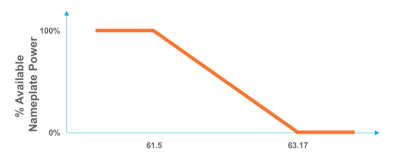Q-Dog
¯\_(ツ)_/¯
Texas is a big place. Some areas get a lot more sun than others. 
Texas is a big place. Some areas get a lot more sun than others.
I just noticed the south west states get more than Florida. Which seems odd.I'm just yanking ArthurEld's chain.I'm not making a technical case.
Cheyenne, WYI just noticed the south west states get more than Florida. Which seems odd.
This guy is not right.I follow a very good solar /EV program in England and it decimates the excuses made by the PoCo,s in Texas ,
it is called The Fully Charged Show and is presented by a very enthusiastic and energetic guy named Robert Llewellyn
I think you will find this a very intriguing revelation !
Here’s an article supporting your comments.This guy is not right.
1. nat gas doubled its out put of power in the big Texas freeze.
2. there were problems or they would have more than doubled there out put
3. Wind and solar production went down.
4.If wind and solar are to do there part in a big freeze if you put up 1 wind mill you would have to put up 2 and let one stay off until the freeze comes and the same for solar.
5. The higher % wind and solar with out there part of the backup the worse of the problem is .
6. With out extra back up power we would have been in even worse trouble.
7. This is just one more point in the foolish wind and solar fairy tail .

Florida would get a higher insolation, but we have those pesky rain storms blotting out the sky from May through November during prime production hours. Not like Corvallis where it rains non-stop for 6 months and seaweed grows on stop signs. More like an afternoon cloud burst that goes away... so the sun can turn the moisture into more humidity. ?I just noticed the south west states get more than Florida. Which seems odd.
Dan Woodfin, senior director for the Electric Reliability Council of Texas (ERCOT), which operates the state’s power grid, said that while ice forced some turbines to shut down just as a brutal cold wave drove record electricity demand, that was the least significant factor in the blackouts. Woodfin also told Bloomberg that the main factors behind the power failures were frozen instruments at natural gas, coal, and nuclear facilities, as well as limited supplies of natural gas.
That doesn't make renewables less flexible. After all, a 100 MW coal fired plant can't output more than 100 MW just because it's cold....when it gets very cold you need more power and wind and solar can't go up because they are at 100%. The higher % solar and wind the less flexable the power production ...
I said gas they run gas plants below max to have somthing for outages and such. There is little coal around me so don't knowThat doesn't make renewables less flexible. After all, a 100 MW coal fired plant can't output more than 100 MW just because it's cold.
If anything, solar and wind suffer in flexibility when there isn't any sunshine or wind. But that's a known problem and the general solution is energy storage (similar to having stockpiles of natural gas for a gas facility). That's actually one of my big gripes, you always hear about energy producing solar or wind and hardly ever about storage (although it was nice to see storage in the Gemini project, see post #70). With renewables you always need a balance of production and storage.
Generators are a simple solution but TX gets more sun for generating electricity than just about anywhere else in the US.

... they run gas plants below max to have something for outages and such....All wind and solar is 100% all the time no way to make more.
| Solar All new PV solar systems have to follow UL 1741 (went into effect a few years back and most states have adopted it) that allow the utilities to throttle back solar. My microinverters throttle from 0 to 100% (ref). But worse case, you could just flip the switch and stop taking power - that doesn't hurt solar. You can take as much or as little as you want. |  |
1. nat gas doubled its out put of power in the big Texas freeze.
or this one I heard elsewhere from some opposite leaning propaganda:natural gas increased production 91% from same date 1yr prior while wind reduced its power output by 72% same date 1yr prior.
Wind output was actually higher than forecast during the Texas freeze


